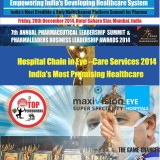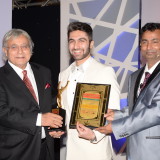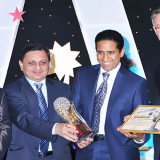Plastic Surgery in india is on rise!
In fact, aesthetic plastic surgeries are being conducted even in smaller cities, thanks to a growing economy and availability of spare cash. According to a global survey by the International Society of Aesthetic Plastic Surgery (ISAPS), India ranks fourth with 9,35,487 cosmetic procedures conducted in the last year. The surgeries account for 4.3% of all procedures recorded globally.
In the survey, US topped the list with 18.6% of all procedures being performed there, followed by Brazil with 10.7% and South Korea with 5.3%. Mexico ranked fifth, accounting for 4.2% of the total procedures performed worldwide.
Of the total procedures conducted in 2015, 4,20,454 or 4.4% were surgical and 5,15,033 or 4.3% were non-surgical.
Among the two types of cosmetic surgeries, reconstructive surgeries were more common in India until a decade ago. Reconstructive surgeries are performed on patients with deformities and those involved in surgeries.
S Raja Sabapathy, chairman of the department of plastic surgery for hand, microsurgery and burns at Ganga Hospital in Coimbatore, highlighted the trend. “Now, the number of aesthetic surgeries being performed in India have increased considerably. The reason for this can be attributed to a growth in the economy and awareness among people who aspire to look better. In the next two decades, one can expect the number of such surgeries to increase by as much as 50% in the number of these surgeries is expected in the next two decades,” Sabapathy said.
The ISAPS survey also showed that a maximum number of Total Body and Extremities Procedures across the world were carried out in India. With 1,53,317 procedures, the country contributes 36.5% of these surgeries globally. These procedures include body lifts as well.
National secretary of the Indian Association of Aesthetic Plastic Surgeon Ashish Davalbhakta pointed out that hair transplant, rhinoplasty, liposuction and breast augmentation or reduction are the most sought after aesthetic surgeries in the country. “The disposable income of people in the age bracket of 35-45 years is increasing considerably and due to rising awareness, a number of people are opting for these surgeries to look better,” Davalbhakta said.
13.5% of patients who get the procedures done in India are from the US, UK and UAE, in that order. “Foreigners also visit the country especially for medical tourism because these procedures are not covered under medical insurance plans in their respective countries,” he said.
According to the ISAPS survey, the types of procedures that people are opting for differ across countries. While breast augmentation remained the top choice for people worldwide, with 15.4% of all surgical procedures, liposuction was another sought after procedure with 14.5% opting for it.
Eyelid surgery stood at number three with a 13.1% share, while abdominoplasty, better known as a tummy tuck, was fourth at 7.9% followed by rhinoplasty, or nose reshaping, at 7.6%.
The popularity of surgical procedures varied in every country with Brazil, US, Mexico, India and South Korea being top countries for the top five procedures. India remained at fourth position in relation to all these surgical procedures.
The survey also noted that the number of non-surgical procedures performed by plastic surgeons remained higher than surgical procedures, reflecting on both advancement in cosmetic surgery innovation and the desirability of less expensive treatments. Breast augmentations done on women below 18 years of age was at 2.6% of the worldwide 12.8%.
The survey indicated a marked increase of over one million cosmetic and aesthetic procedures performed in 2015. “The world continues to find value in aesthetic plastic surgery as indicated by the growing number of procedures,” the report stated.
Globally, Botulinum Toxin, or BOTOX, continued to rule among both men and women with a total of over 4.6 million procedures reported. Another popular injectable, Hyaluronic Acid, increased to 6.5% between 2014 and 2015. Breast augmentation also turned out to be the most common surgical procedure among women with a 10.4% increase from 2014, while eyelid surgery is much more prevalent among men.
According to the survey, women underwent more than 18 million surgical and non-surgical procedures, making it 85.6% of the total. Men, on the other hand, had more than 3 million surgical and non-surgical procedure performed on them, accounting for 14.4 % of the total.
The estimated number of plastic surgeons in India, according to the report, is 2,150 making it 5.3% of the global population.Box:
HL: A Little Nip And Tuck
BOX 1:
Common procedures
Surgical
Procedure – In Numbers
Liposuction – 88,193
Rhinoplasty – 44,290
Abdominoplasty – 32,401
Eyelid surgery – 29,434
Breast augmentation – 29,606
Non-Surgical
Procedure – In Numbers
Hair Removal – 1,54,650
Botulinum Toxin – 85,334
Hyaluronic Acid 60,050
Chemical Peel 58,093
Fat Reduction 32,293
Spending
Breast augmentation
Procedure to place the implant 75,000 – 85,000
Cost of the implant 35,000 – 45,000
(In rupees)
Hair Transplant: Minimum 2,000-3,500 grafts in the price range of 50 -75 per graft
The growth of emerging markets is poised to transform the delivery of surgical care around the world by 2030, according to a new report.
The emphasis will be on affordable technology for early diagnosis, portable modular equipment for minimally invasive and robotic surgery; and smart systems incorporating low-cost sensors and mobile technology to track clinical outcomes and improve team-based surgery.The report summarises the findings of a workshop held in Boston earlier this year by product design and development firm Cambridge Consultants. It offers insight into the future of emerging markets surgical care – as seen through the eyes of industry leaders. And it looks at how these new approaches to healthcare will extend beyond emerging markets to disrupt and transform how affordable quality surgical care is delivered globally.“More than 85% of the world’s population lives in emerging markets, yet many of these people have no access to affordable quality healthcare, particularly complex treatment like surgery,” said Rahul Sathe, head of surgical innovation for emerging markets at Cambridge Consultants.“Inadequate hospital infrastructure, a scarcity of qualified clinicians and fragmented healthcare ecosystems prevent successful surgical care. The surgical device industry has unprecedented growth opportunity to address the unmet needs of very large patient populations.”
The report spells out the huge opportunities for technology disruption in emerging markets. Infrastructure and regulations are still being formed, and industry legacy is not particularly strong – offering a lower barrier to innovation compared with developed markets.
The primary role of technology will be twofold, says the report. It can extend the ‘hospital ecosystem’ across the continuum of care from early diagnosis and surgical intervention to postoperative monitoring. It can also ensure products and solutions are robust, usable and affordable – and unlock access to care.
The workshop delegates predict that patient expectations and hospital ecosystems in emerging markets will dramatically evolve and, in some cases, leapfrog developed markets. Even today, some hospitals in India have better outcomes for cardiac surgery than top hospitals in the US or UK. And top-tier hospitals in China are now being designed to be eco-friendly, sensor-rich and cloud-connected.
“Emerging markets will play a significant role in transforming our industry,” said workshop delegate Agustin Zabulanes, Latin America marketing manager at Boston Scientific. “Local emerging market companies may provide stiff competition to multinational companies – but they may also prove to be powerful partners in global surgical care. Success will require industry players to evolve the way they do business, organise for innovation and use enabling technology.”
The report says ‘reverse innovation’ offers developed markets the opportunity to benefit from emerging markets by learning new approaches to achieving healthcare affordability and efficiency – with lasting transformation coming from integrating new business models and innovation models. “As organisations evolve and succeed, innovating for emerging markets will enable industry to disrupt and transform how surgical care is delivered globally,” said Sathe.
To request a copy of the workshop report – Emerging markets: transforming surgical care globally by 2030 – visit: www.cambridgeconsultants.com/2016-emerging-markets-report
Pharmanewsprwire is the most credible destination of pharmaceutical news disseminated to more than 1000 Press Agencies in the world. Pharmanewsprwire is a division of illustrious Network 7 Media Group















Recent Comments